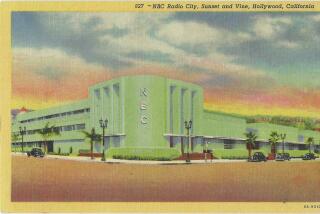Stan Chambers dies at 91; newsman had six-decade career at KTLA
When the story broke that a little girl was trapped in a well in San Marino, thousands of Angelenos snapped on their television sets. They kept them on for the next 27 hours.
The year was 1949 — decades before live coverage of car chases, hostage crises and other breaking news became commonplace.
“That was the first time anyone realized that television had this remarkable ability,” Stan Chambers, one of the two reporters on the scene for KTLA-TV Channel 5’s unusual broadcast, recalled years later of his role in TV news history. “It was then that I decided that I really wanted to be in news.”
Chambers, who stayed on the story through its heartbreaking ending to become one of the most enduring and recognizable faces in local television news, died Friday at his home in Holmby Hills, the station announced, without specifying the cause. He was 91.
Chambers’ more than six-decade career at KTLA spanned nearly the entire history of the pioneering Los Angeles TV station. When he retired in August 2010 — on his 87th birthday — he had covered more than 22,000 stories, the station said, including many of Southern California’s biggest news events.
He broke the story of the beating of black motorist Rodney G. King by Los Angeles police officers following a high-speed chase in 1991, after KTLA received an amateur home video of the incident shot by George Holliday from his Lake View Terrace balcony. He also covered the 1992 Los Angeles riots sparked by the acquittal of four white L.A. police officers charged with using excessive force on King.
Among the other major stories Chambers reported for the station were the 1961 Bel-Air/Brentwood fire, the 1963 Baldwin Hills dam disaster, the 1965 Watts riots, the 1968 assassination of Sen. Robert F. Kennedy, the 1971 Sylmar earthquake and the 1984 Olympics.
Over the years, the gentlemanly Chambers was praised for his objective news reporting and a likable, believable quality that engendered viewers’ trust.
“Stan’s personal modesty and reverence for the news earned him the respect of government officials, civic leaders and other newsmakers who knew that Stan’s stories would be knowledgeable and fair. The same qualities earned credibility with L.A.’s vast audience,” broadcast veteran Warren Olney wrote in nominating the longtime broadcaster for the Society of Professional Journalists’ Helen Thomas Lifetime Achievement Award, which Chambers received in 2006.
“Stan’s long career has provided a model of how TV reporting ought to be done,” Olney wrote, “and helped sustain the notion that television news can, and ought to be, serious business.”
Chambers’ honors include numerous local Emmy and Golden Mike awards. He also has a star on the Hollywood Walk of Fame and a building named after him at KTLA.
He was a 24-year-old Navy veteran attending USC on the GI Bill when he joined KTLA as a production assistant in late 1947, less than a year after Channel 5 went on the air as the first commercially licensed TV station in the western United States.
At the time, there were only a few hundred TV sets in Los Angeles, and the new station, then owned by Paramount Pictures, was operating out of a cavernous old garage across the street from the studio.
Chambers initially did everything from writing the rundown sheet for the day’s programming to ordering props and assisting the stage crew. But he dreamed of being on camera and soon got his chance.
In his early years at KTLA, he appeared on camera in a variety of roles, including donning ice skates to host “Frosty Frolics,” a “musical comedy on ice” broadcast live from the Polar Palace in Hollywood. The show’s trademark was the scripted fall onto the ice that Chambers made at the end of each show.
He had been at the station barely two years when he was sent to cover the story that would mold his news career.
KTLA’s Bill Welsh was already on the scene when Chambers showed up at the vacant lot in San Marino, where rescuers were desperately searching for a way to reach 3-year-old Kathy Fiscus, who had fallen into a narrow abandoned well pipe the night before, on April 8, 1949.
For 27 1/2 hours Chambers and Welsh continuously reported the unsuccessful attempt to rescue the little girl, who was wedged in a 14-inch-wide pipe 90 feet below ground.
KTLA viewers remained riveted to their TV sets throughout the unfolding ordeal. Many were moved to tears when rescuers finally reached the girl and found she was dead.
“Television grew up in a hurry last week,” one newspaper noted. “The masterly reporting of the tragedy of little Kathy Fiscus, who fell to her death in an abandoned well, and the subsequent rescue was so graphically detailed by KTLA, as to beggar description.”
Decades later, Chambers recalled the story’s impact. “People were stunned,” he told a local paper in 2009. “It was like they had lost their own little girl. It was such a shared moment. That’s when television became television as we know it today.”
Over the years, Chambers anchored newscasts and served as KTLA’s news director from 1963 to 1970. But he preferred being in the field as a reporter.
“What I really love about this job is that it’s the real world,” he told the Los Angeles Times in 1993 when he marked his 46th anniversary at KTLA. “I get more out of it than anyone because I’m right in the middle of it. And I never know what is going to happen next.”
Born in Los Angeles on Aug. 11, 1923, Chambers grew up in the Mid-Wilshire district. His father died when Chambers was 4, and his mother worked as a movie extra and bit player to support Chambers and his brother, Dave.
A graduate of Loyola High School, Chambers enrolled at Loyola University, where he took speech classes and wrote a column for the school newspaper.
Joining the Navy’s officer training program, he was transferred to USC for his senior year and graduated in 1944.
Although he volunteered for a job helping direct the fire from Navy ships, the war ended before he finished his training.
Returning to USC after the service, he planned to go to law school. But balking at the long line for law school registration, he began working instead on a master’s degree in history. At the same time, he took radio broadcasting classes and was encouraged to pursue a radio career. But television, not radio, soon became his focus.
After hearing that the experimental TV station that would become KTLA was planning to expand its broadcasting schedule, Chambers came up with the idea of producing a half-hour TV show called “Campus Magazine,” based on the publication of the same name that he helped produce at USC. Only one installment aired on KTLA, in April 1947.
“When the show was over, there was no doubt in my mind that I wanted to get into television,” Chambers wrote in his 1994 book, “News at Ten: Fifty Years with Stan Chambers.”
When Chambers finally announced in 2010 that it was time to retire, he was still going into work nearly every day and doing about a story a week.
“Stan probably has the record for the longest career in American television news,” KTLA News Director Jason R. Ball told The Times then. “It’s unheard of in this industry for someone to have a career lasting 63 years, and he’s seen the entire history of the news business.”
Chambers’ first wife, Beverly, died of cancer in 1989. He is survived by his second wife, Gege Elder, whom he married in 1990; 11 children, 38 grandchildren and eight great-grandchildren from his first marriage; and Elder’s three children and seven grandchildren.
McLellan is a former Times staff writer. Times staff writer Elaine Woo contributed to this report.
More to Read
Start your day right
Sign up for Essential California for the L.A. Times biggest news, features and recommendations in your inbox six days a week.
You may occasionally receive promotional content from the Los Angeles Times.





